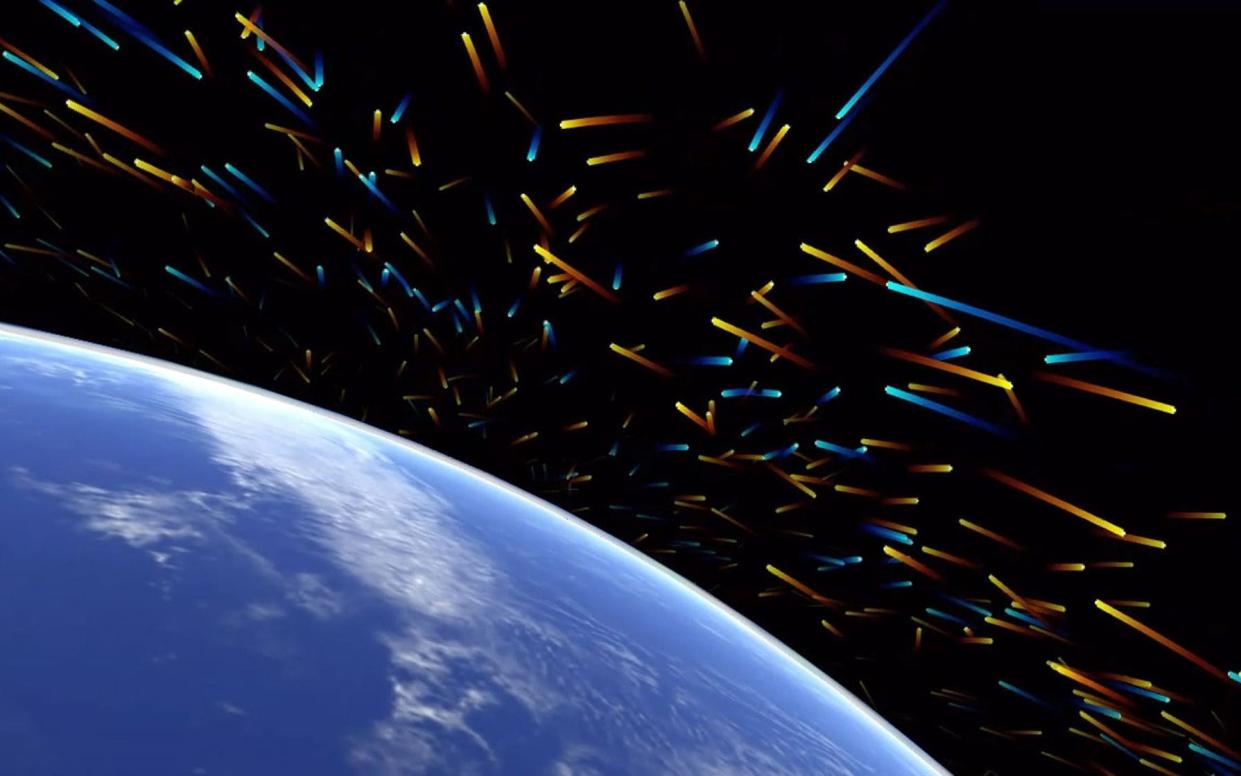Japanese satellite to use laser to rid space of dangerous debris

A Japanese company has announced plans to de-clutter space with a satellite armed with a high-powered laser.
Several proposals have previously been put forward to remedy the problem of an estimated 900,000 shards of debris measuring slightly less than 3 inches in length orbiting the planet and posing a hazard to satellites and even the International Space Station.
The plan by Sky Perfect JSAT Corp., a satellite communications company, is the first to suggest using a laser to rid our skies of junk, with the Tokyo-based firm confident that it will be able to launch its first commercial debris-destroying vehicle in 2026.
Sky Perfect JSAT is working with the Japan Aerospace Exploration Agency (JAXA), Nagoya University and Kyushu University, with the completed satellite designed to target even a relatively small piece of debris with its laser. A pulse of energy from the laser will disrupt the orbit of the target and send it spinning into the Earth’s atmosphere, where it will burn up, the company said.
With the amount of debris circling the planet increasing every year, the company believes satellite operators will be happy to pay to ensure that the orbit selected for any new multi-million pound vehicle has been cleared of anything that might cause it damage.
A collision with even larger objects - NASA points out that of the 5,000 satellites presently orbiting the Earth, around 2,000 are defunct - could be catastrophic.
“The problem of space debris is an environmental problem similar to CO2 and marine plastics”, the company said in a statement. “Therefore, JSAT will continue to contribute to the maintenance of a sustainable space environment, aiming to solve the problem of space debris through this project”.
The company has not specified how much is being invested in the project.
Japan’s innovative space sector has previously come up with other plans for scouring the skies of space junk, with JAXA in 2014 announcing plans for an electrodynamic tether. The equipment would be a mesh of aluminium and steel wires that would dangle nearly 2,300 feet behind an unmanned spacecraft and use an electromagnetic field to slowly gather pieces of debris. Once full, the craft would be slowed down and the entire unit and its bag of space rubbish would burn up.
Another Japanese company, Astroscale, has announced plans for a spacecraft that is designed to deal with far larger pieces of junk, such as decommissioned satellites, by releasing a drone craft that attaches itself to the target and positions it to re-enter the Earth’s atmosphere, where it will be incinerated.

